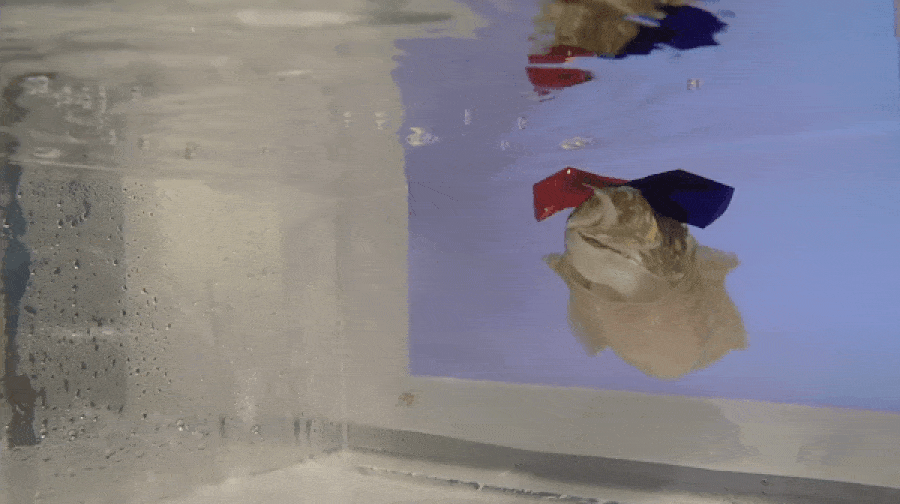Cuttlefish, the cute, often tiny cousins of squid and octopi, are highly skilled hunters. They are great at judging distance, striking out with their tentacles and snatching prey with ease. Scientists hoping to learn more about how cuttlefish see the world came up with a rather interesting test, and it involves slapping a pint-sized pair of 3D glasses on the little sea creatures.
Aside from making the cuttlefish even more adorable than they already were, the red and blue lenses offered researchers a way to test the 3D vision of the animals. This, of course, meant the cuttlefish had to watch 3D movies.
After training the cuttlefish to be comfortable wearing the glasses, the researchers showed the animals animated movies of shrimp, which cuttlefish prey upon. The shrimp were displayed in multiple different colors. The scientists observed where the cuttlefish attempted to strike the screen, which helped them to determine how the creatures use information from both of their eyes.
The researchers were able to determine that the cuttlefish are able to account for the differences they see between their eyes, meaning that they are using visual data from both eyes to paint a mental picture of what is actually in front of them. This is called stereopsis, and it’s actually the same way that human vision works, and it was an exciting discovery for the researchers.
“How the cuttlefish reacted to the disparities clearly establishes that cuttlefish use stereopsis when hunting,” Trevor Wardill, co-author of the research, explained. “When only one eye could see the shrimp, meaning stereopsis was not possible, the animals took longer to position themselves correctly. When both eyes could see the shrimp, meaning they utilized stereopsis, it allowed cuttlefish to make faster decisions when attacking. This can make all the difference in catching a meal.”
The study was published in the journal Science Advances.








